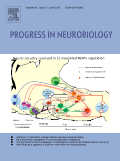
NATURE NEUROSCIENCE
Scope & Guideline
Elevating Neuroscience Through Rigorous Scholarship
Introduction
Aims and Scopes
- Neurobiology of Behavior:
Explores the neural mechanisms underlying behaviors, including decision-making, memory, and learning, through various experimental models including animal studies and human imaging. - Molecular and Cellular Neuroscience:
Focuses on the molecular and cellular mechanisms of neural function, including synaptic plasticity, neurogenesis, and the role of glial cells in health and disease. - Neurodevelopment and Aging:
Investigates the processes of neurodevelopment and the effects of aging on neural circuits, including research on neurodegenerative diseases and cognitive decline. - Neuroinflammation and Immune Responses:
Examines the interactions between the nervous system and immune system, particularly in the context of neuroinflammatory diseases and brain injury. - Neurotechnology and Computational Neuroscience:
Utilizes advanced computational techniques and neurotechnologies to understand brain function and to develop new therapeutic strategies.
Trending and Emerging
- Neuroimmune Interactions:
Research on the interplay between the nervous and immune systems is gaining traction, particularly in understanding how immune responses affect brain health and disease. - Neurogenic Mechanisms in Disease:
There is an increasing focus on how neurogenesis and neural plasticity can be harnessed for therapeutic purposes in conditions such as depression and neurodegenerative diseases. - Single-Cell and Multi-Omics Approaches:
The application of single-cell sequencing and multi-omics technologies is emerging as a pivotal trend, enabling detailed insights into cellular heterogeneity and gene expression in the brain. - Neurotechnology Innovations:
Advancements in neurotechnologies, including optogenetics and in vivo imaging, are becoming central to studies aiming to manipulate and observe neural circuits in real-time. - Computational Modeling of Neural Dynamics:
There is a growing interest in the use of computational models to simulate neural dynamics and predict behavior, enhancing our understanding of complex neural processes.
Declining or Waning
- Basic Neuroanatomy:
Research focused solely on the descriptive aspects of neuroanatomy is becoming less prominent as studies increasingly emphasize functional and molecular insights. - Traditional Neuropharmacology:
The exploration of traditional pharmacological approaches is declining in favor of more integrative studies that focus on the interactions between neural circuits and behavior. - Psychological Models of Behavior:
Studies that rely solely on psychological models without a strong biological basis are seeing reduced emphasis as the field moves towards more biologically grounded approaches.
Similar Journals

NEUROSCIENTIST
Unveiling Innovations in Clinical NeurologyNEUROSCIENTIST is a leading journal in the field of clinical neurology and neuroscience, published by SAGE Publications Inc. With an impressive impact factor reflected in its Q1 quartile ranking in both clinical neurology and miscellaneous neuroscience as of 2023, this journal positions itself as a crucial platform for the latest research and advancements in the neural sciences. Spanning from 1995 to 2024, NEUROSCIENTIST features a range of high-quality, peer-reviewed articles that cater to researchers, practitioners, and students alike. Although it does not offer Open Access options, the journal remains a vital resource owing to its Scopus rankings, situating it within the top percentile of its categories: ranked #28 out of 400 in clinical neurology and #15 out of 113 in general neuroscience. The journal's commitment to disseminating significant findings underlines its importance in fostering advancements in neurological understanding and treatment.

BRAIN RESEARCH
Unlocking the mysteries of the brain, one study at a time.BRAIN RESEARCH is a premier journal published by Elsevier, specializing in the intricate domains of neuroscience, developmental biology, and molecular biology. Established in 1966, this esteemed publication has become a cornerstone for researchers, professionals, and students dedicated to advancing our understanding of brain function and disorders. With an impressive impact factor and a consistent presence in the Q2 quartiles across key categories—such as Developmental Biology, Neurology, and Neuroscience—it stands out as an essential resource for disseminating innovative research and pioneering insights. The journal's scope encompasses both clinical and fundamental studies, fostering a multidisciplinary approach to the complexities of neural systems. Although it is not an open-access journal, BRAIN RESEARCH provides a vital platform for sharing progressive findings that can inspire future studies and contribute significantly to the evolutionary discourse in neuroscience. Based in the Netherlands, at RADARWEG 29, 1043 NX AMSTERDAM, BRAIN RESEARCH continues to shape the landscape of neuroscience research, inviting submissions that explore the latest discoveries and therapeutic strategies.

NEUROBIOLOGY OF AGING
Transforming Understanding of Aging Through NeurobiologyNEUROBIOLOGY OF AGING, published by Elsevier Science Inc, is a premier journal dedicated to advancing our understanding of the complex interactions between the aging process and neurobiological mechanisms. With an ISSN of 0197-4580 and E-ISSN 1558-1497, the journal has established itself as a critical resource in the fields of Aging, Developmental Biology, Geriatrics and Gerontology, Clinical Neurology, and Neuroscience. Boasting a Q1 ranking in multiple categories, the journal is positioned within the top echelons of scholarly publication, underscoring its significant impact with an impressive Scopus ranking in various subfields. Committed to disseminating high-quality, peer-reviewed research, NEUROBIOLOGY OF AGING welcomes original articles, reviews, and research notes aiming to uncover the underlying processes of aging on the nervous system, fostering collaboration among researchers, professionals, and students alike. Although primarily subscription-based, the journal continues to play a vital role in shaping the discourse on aging and neurobiology, making it an essential publication for those engaged in this dynamic field.

Frontiers in Cellular Neuroscience
Illuminating the cellular pathways of the brain.Frontiers in Cellular Neuroscience, published by FRONTIERS MEDIA SA, is an esteemed open-access journal operating out of Switzerland that has been at the forefront of disseminating cutting-edge research since its inception in 2007. With a focus on the cellular and molecular aspects of neuroscience, this journal addresses fundamental questions and advances our understanding of the nervous system, making it indispensable for researchers, professionals, and students in the field. As of 2023, it is ranked in the Q2 category for Cellular and Molecular Neuroscience, positioned at rank #27 out of 97 in Scopus, and boasting a notable 72nd percentile ranking, reflecting its impactful contributions to the discipline. The journal's commitment to open access enhances the accessibility of vital research findings, promoting knowledge sharing and collaboration. Researchers looking for a platform to publish groundbreaking neuroscience research will find Frontiers in Cellular Neuroscience an ideal venue for reaching a wide audience.

Eneurobiologia
Advancing the Frontiers of NeurobiologyEneurobiologia is an esteemed open-access journal published by UNIV VERACRUZANA, INST INVESTIGACIONES & EDUCACION, dedicated to advancing research in the vibrant field of neurobiology. With its launch in 2010, the journal aims to disseminate high-quality, peer-reviewed research articles that explore the complexities of neural systems, neurodevelopment, and neurodegenerative disorders. By providing a platform for both established researchers and emerging scholars, Eneurobiologia fosters interdisciplinary collaboration and knowledge exchange within the scientific community. Its open-access model ensures that valuable findings are accessible to a global audience, promoting the widespread application of neurobiological research. As a crucial resource for students, professionals, and researchers alike, Eneurobiologia plays a pivotal role in shaping the future of neurobiological studies and enhancing our understanding of the brain and nervous system.

Annual Review of Neuroscience
Unveiling the Complexities of the Nervous SystemThe Annual Review of Neuroscience, published by Annual Reviews, is a premier journal that has been at the forefront of neuroscience research since its inception in 1978. With an ISSN of 0147-006X and E-ISSN 1545-4126, this leading academic journal boasts a remarkable impact factor, placing it in the prestigious Q1 category in Neuroscience (miscellaneous), with an impressive Scopus ranking of 4 out of 113 and a stellar 96th percentile in general neuroscience. Focused on publishing comprehensive and authoritative review articles, the Annual Review of Neuroscience aims to synthesize and critically evaluate the latest advances in the field, making it an indispensable resource for researchers, professionals, and students alike. While it does not offer open access, the insights and discoveries highlighted in its issues are crucial for those dedicated to understanding the complexities of the nervous system and driving forward innovative research. With a commitment to excellence and a forward-looking perspective, this journal continues to shape and influence the future of neuroscience.

NATURE REVIEWS NEUROSCIENCE
Bridging emerging trends with established knowledge.NATURE REVIEWS NEUROSCIENCE is a prestigious journal published by NATURE PORTFOLIO, renowned for its commitment to advancing the field of neuroscience. Since its inception in 2000, it has become a significant platform for disseminating comprehensive reviews and insights that shape the understanding of neurological science. With an impressive Scopus ranking of #2 out of 113 in the General Neuroscience category, this journal consistently engages the top 2% of researchers and professionals in the field, underscoring its impactful contributions. The journal not only provides a forum for high-quality reviews but also bridges emerging research trends with established knowledge, fostering a robust discourse among scholars and practitioners. As a Q1 journal in Neuroscience (miscellaneous), NATURE REVIEWS NEUROSCIENCE offers invaluable access to critical research developments, making it an essential resource for students, researchers, and professionals aiming to stay at the forefront of neuroscience advancements. Explore the latest findings and engage with a global community dedicated to unraveling the complexities of the nervous system.

NEUROSCIENCE
Transforming ideas into impactful neuroscience research.NEUROSCIENCE, published by PERGAMON-ELSEVIER SCIENCE LTD, has established itself as a reputable journal in the field of neuroscience since its inception in 1976, continuing its contributions through 2024. With a Category Quartile ranking of Q2 in Neuroscience (miscellaneous) and a Scopus Rank of #41 out of 113, this journal represents a critical platform for the dissemination of innovative research and insights. Although it currently does not offer open access options, NEUROSCIENCE aims to advance our understanding of the nervous system by publishing high-quality original research, reviews, and methodological articles, thereby engaging a comprehensive audience of researchers, professionals, and students alike. With an impact factor that reflects its significance in the scientific community, this journal remains a go-to source for cutting-edge discoveries and scholarly discussions in the dynamic field of neuroscience.

NEUROSCIENCE LETTERS
Pioneering Research for a Deeper Neural Insight.NEUROSCIENCE LETTERS is a distinguished journal published by ELSEVIER IRELAND LTD, focusing on disseminating impactful research across the field of neuroscience. With its ISSN 0304-3940 and E-ISSN 1872-7972, the journal serves as a vital platform for researchers, professionals, and students aiming to explore the complexities of nervous system function and related disorders. Since its inception in 1975, NEUROSCIENCE LETTERS has contributed significantly to the field, currently positioned in the Q3 category for Miscellaneous Neuroscience, with a respectable Scopus rank of 52/113, placing it in the 54th percentile among its peers. The journal is published in Ireland and offers a comprehensive repository of scientific insights, methodologies, and innovative findings that advance our understanding of neurological phenomena. While not an open-access journal, it remains an essential resource for the latest advances in neuroscience research and the academic community’s collective knowledge.

PROGRESS IN NEUROBIOLOGY
Exploring the Depths of Brain FunctionPROGRESS IN NEUROBIOLOGY is a prestigious journal dedicated to advancing the field of neuroscience, published by Pergamon-Elsevier Science Ltd. With an impressive impact factor, it stands as a critical resource for researchers, professionals, and students alike, featuring rigorous peer-reviewed articles that explore the latest developments in neurobiology. The journal has established itself as a leading publication, ranked in the Q1 category for Neuroscience (miscellaneous) and holding a notable 13/113 rank in General Neuroscience per Scopus metrics, placing it in the top 12% of its field. Since its inception in 1959, PROGRESS IN NEUROBIOLOGY has covered a wide array of topics, from molecular mechanisms to cognitive processes, fostering a comprehensive understanding of brain functions. While the journal is not open access, it ensures accessibility to profound knowledge through institutional subscriptions. Researchers and scholars will find critical analyses and innovative research that are pivotal for both foundational knowledge and cutting-edge investigations in the neuroscience realm.